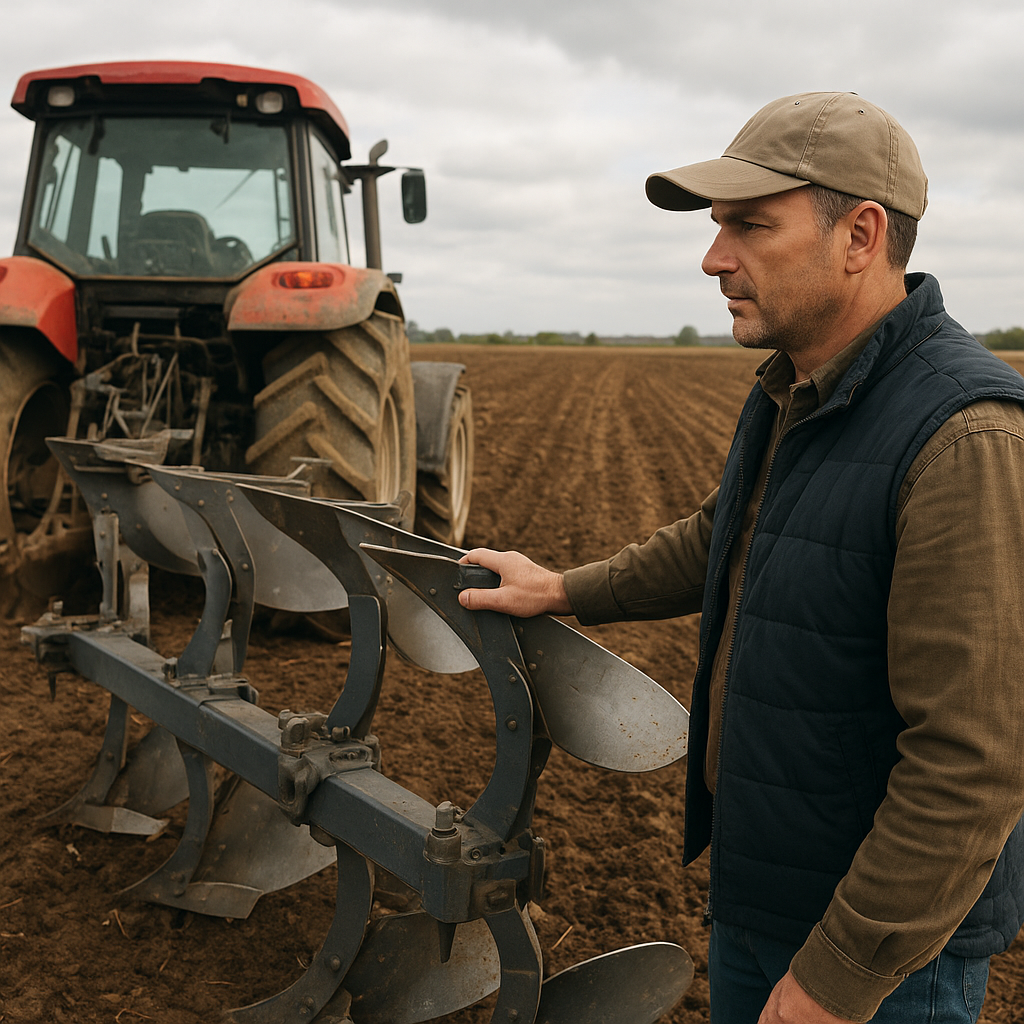Selecting the perfect plow for your tractor involves more than simply matching horsepower ratings. It requires a thorough understanding of soil characteristics, tractor capabilities, and the specific goals of your tillage operation. This guide will walk you through essential plowing considerations, from identifying soil types to optimizing setup and maintenance for long-term efficiency.
Understanding Your Soil Type and Conditions
Every field has its own unique combination of texture, moisture level, and compaction. Before choosing a plow, conduct a few simple tests:
- Soil texture analysis – pinch a small sample between your fingers. Sandy soils feel gritty, while clayey soils feel smooth and sticky.
- Drainage test – dig a hole about 30 cm deep, fill with water, and observe how quickly it drains.
- Compaction check – use a soil penetrometer or even a garden spade to assess how hard the ground is at various depths.
Understanding these factors helps you determine:
- Depth control requirements – how deep you need to break the soil to promote root penetration.
- Resistance levels – how much draft force your tractor must exert to pull the plow.
- Whether you need specialized attachments like subsoilers or chisel plows to manage heavy compaction zones.
Selecting the Appropriate Plow Type
Plow selection hinges on your soil assessment and agronomic goals. Here are common plow types and their ideal applications:
Moldboard Plow
- Traditional design featuring a curved moldboard that inverts the soil, burying crop residues.
- Best for: primary tillage in heavy clay or silt soils where residue incorporation is critical.
- Pros: excellent weed control, thorough inversion, and soil aeration.
- Cons: high draft requirement, potential for erosion on slopes.
Chisel Plow
- Equipped with strong shanks that crack compacted layers without full inversion.
- Best for: breaking up hardpan and improving water infiltration.
- Pros: lower draft than a moldboard, preserves surface residue for soil conservation.
- Cons: does not bury weeds; may require follow-up discing or harrowing.
Disc Plow
- Uses concave discs that slice and roll soil clods.
- Best for: stony or root-laden fields where moldboards clog.
- Pros: can handle trashy fields, relatively low maintenance.
- Cons: less inversion than moldboard, may leave more residue on the surface.
Subsoiler
- Penetrates deep compacted layers without turning the soil over.
- Best for: alleviating deep compaction, improving drainage in poorly drained soils.
- Pros: enhances rooting depth, can be used intermittently.
- Cons: not designed for whole-field tillage; usually used in strip-till setups.
Adjustments and Maintenance for Optimal Performance
Once you’ve selected the right plow, fine-tuning and upkeep become crucial for consistent results and extended durability. Follow these tips:
- Check share and point wear regularly. Worn components increase draft and reduce furrow quality.
- Adjust coulters to cut residue cleanly ahead of the moldboard or shank, preventing plugging.
- Set the skimmer depth so it intercepts surface residue just below the cutting edge, ensuring even distribution.
- Level the plow frame laterally to produce straight furrow bottoms and uniform ridge heights.
- Hydraulic systems should be bled and inspected to maintain consistent draft control and depth accuracy.
Routine maintenance tasks:
- Grease all pivot points at recommended intervals.
- Torque bolts to the manufacturer’s specifications.
- Inspect frame welds and replace any bent or cracked structural members.
- Clean off soil and debris after each use to prevent rust and component failure.
Advanced Plowing Techniques and Best Practices
To achieve the best possible results while minimizing fuel consumption and soil disturbance, consider these practices:
Match speed and RPM:
Operating your tractor at the optimal engine speed can reduce slippage and improve traction. Generally, a ground speed between 4 and 7 km/h works well, but always refer to plow manufacturer guidelines.
Alternate plow bottom angles:
Adjusting the moldboard tilt can change the aggressiveness of soil inversion. In lighter soils, a steeper angle ensures thorough burial of residues, while in heavy soils a shallower angle reduces draft requirements.
Follow contour lines on slopes:
Contour plowing helps control erosion by running parallel to elevation curves. Ensure plow alignment matches the hillside grade to create natural water breaks.
Incorporate cover crops:
Planting cover crops such as clover or rye before plowing can improve organic matter and provide a protective mat. When you plow, residues decompose more quickly, enhancing soil structure.
Implement strip-till systems:
Strip-till involves tilling narrow bands of soil where the crop row will be planted, leaving the inter-row undisturbed. This method combines benefits of no-till residue cover with the seedbed preparation of conventional tillage and conserves moisture.
By understanding your soil, choosing the correct plow type, maintaining your equipment meticulously, and applying advanced techniques, you can maximize field productivity while preserving soil health. These steps will ensure your tractor and plow operate as a highly efficient tillage team season after season.
